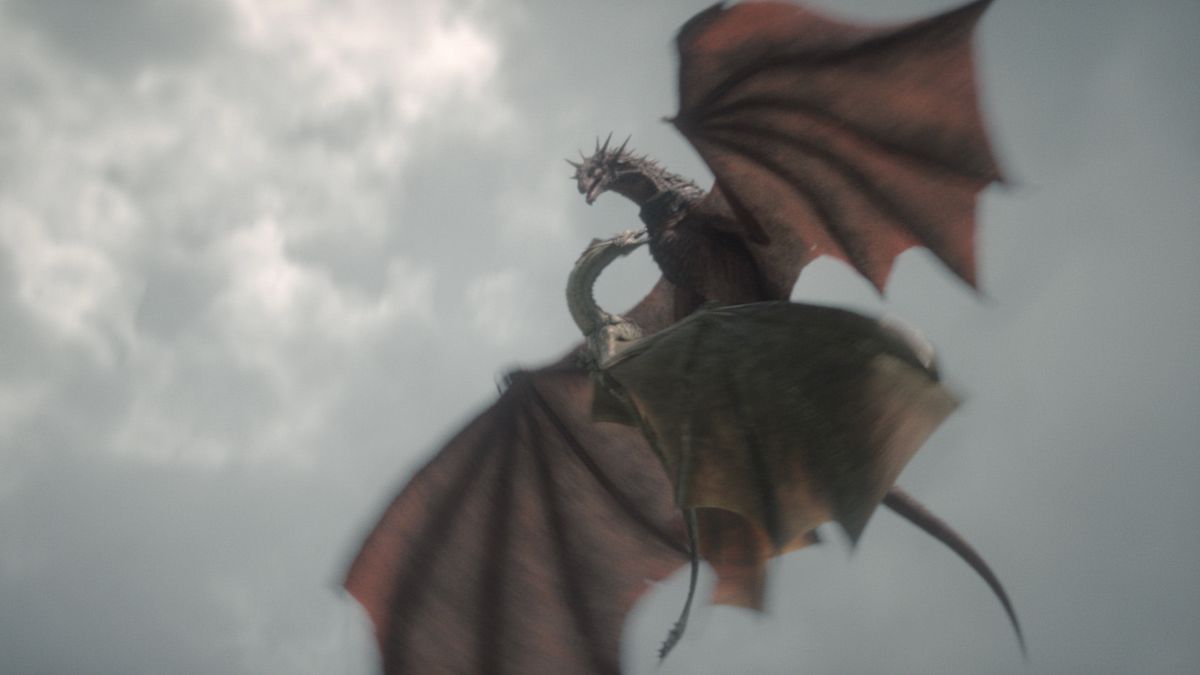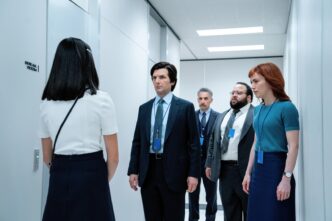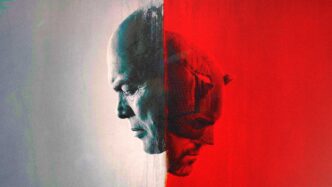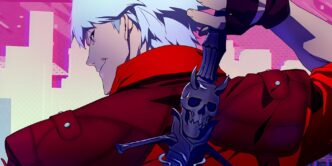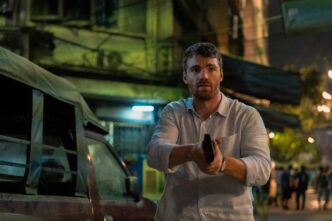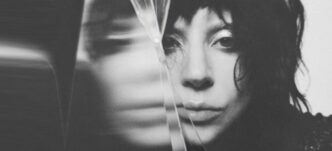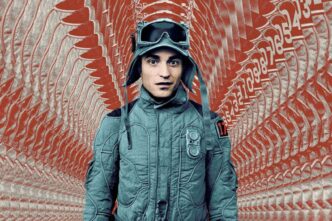House of the Dragon, the enthralling prequel to Game of Thrones, has finally hit its stride in a second season that’s taken its time setting up its pieces. Season 2, Episode 4, titled “The Red Dragon and the Gold,” stands out as a significant episode that blends high-stakes action with deeply personal conflicts. Directed by Alan Taylor, this episode showcases a monumental dragon fight that leaves a lasting impact on both the characters and the overall narrative.
The Build-up: Stakes and Strategies
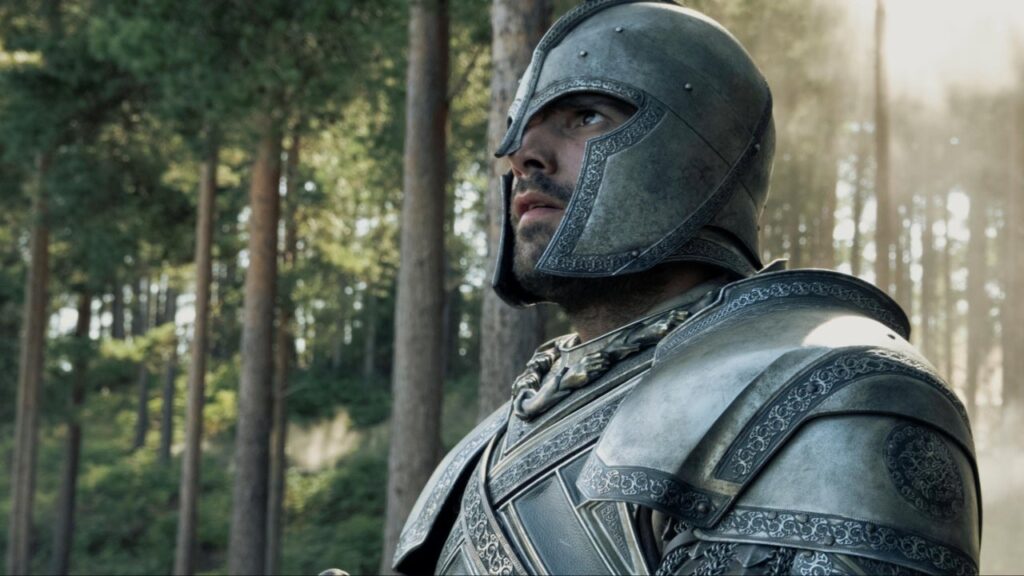
The episode begins with a strategic move by Team Green to storm Rook’s Rest, a key stronghold in the Crownlands. Rhaenyra’s council, led by Rhaenys Targaryen (Eve Best), quickly responds to this threat. Rhaenys’ decision to take on this mission underscores her position as the most experienced dragon rider, as Eve Best explains: “She’s the only person who could go. Jace is not relevant, sorry Jace. And it’s too risky for Rhaenyra, because she’s the leader and that would be a very serious loss. Whereas Rhaenys is the most experienced of all the dragon riders that they have” (Esquire). This sets the stage for an epic confrontation between Meleys, Sunfyre, and Vhagar.
Alan Taylor, the director, emphasizes the importance of Rhaenys’ emotional journey leading up to and during the battle. He notes, “I was very keen on dealing with Rhaenys’ fate, how she handled it, and how she handled herself. In the first few readings of the script, I saw that the key moment above all else was when she decided to turn back to engage Vhagar” (AV Club). This decision becomes the episode’s focal point, highlighting her bravery and sense of duty.
The Battle: Tactics and Execution
The dragon fight is a visual and emotional spectacle, showcasing the power and ferocity of the dragons. Rhaenys uses Meleys’ agility and speed to outmaneuver the larger Vhagar, while Aegon’s Sunfyre adds another layer of complexity to the battle. Taylor’s approach to the battle emphasizes the destructive potential of the dragons, likening Vhagar’s attacks to a “proxy nuclear event” (AV Club).
The visual effects team excels in bringing the dragons to life, creating a visceral and immersive experience for the audience. Taylor recalls the challenges of filming these sequences: “The strangest part was that we did the VFX work later, so we did the dragon-riding stuff at the very end of our shoot” (AV Club). This method allowed the actors to perform in a more realistic environment, enhancing the authenticity of their interactions with the dragons.
Tom Horton, House of the Dragon’s VFX producer, remarks on the complexity of these scenes: “The dragon brawl at Rook’s Rest — which at a point becomes 12 minutes of nonstop CGI action — was the most difficult sequence. It was the one that we finished last” (Polygon). This method allowed the actors to perform in a more realistic environment, enhancing the authenticity of their interactions with the dragons.
Rhaenys’ journey in this episode is marked by a profound sense of duty and acceptance of her fate.
Eve Best describes her character’s mindset during the battle: “It was a literal letting go, and 100 per cent emotional and spiritual letting go. Absolute detachment and peace and release, which is such a relief” (Esquire).
This detachment is visually captured in the shot of Rhaenys falling from Meleys, her face embodying a mix of serenity and resolve.
Aemond’s Calculated Ruthlessness
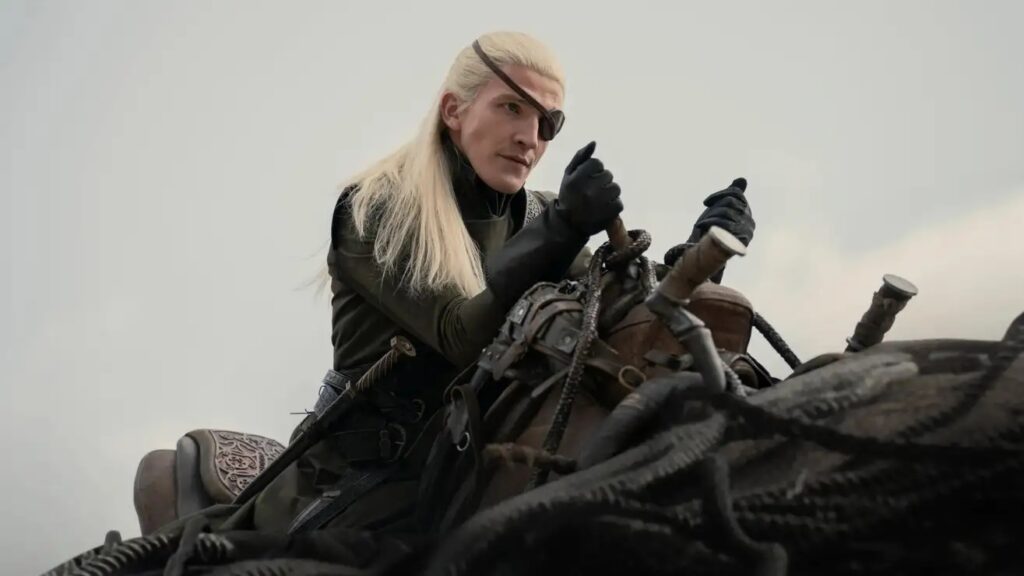
Aemond Targaryen (Ewan Mitchell) plays a crucial role in this battle, driven by both tactical considerations and personal grudges. Taylor highlights the complexity of Aemond’s motivations, noting, “The delight of having an actor like Ewan is that it can be all of the above. First of all, it’s a strong tactical move to just blast preemptively with fire. But besides the resentments he carries from previous episodes with his brother, there’s again a similar feeling of, ‘You idiot; you’re asking for this’” (AV Club).
Ewan Mitchell elaborates on Aemond’s internal conflicts, saying, “You don’t necessarily know what is going on behind Aemond’s eye. You don’t know what he’s thinking, but you do know that he is thinking. He’s a very calculative person. He’s not just your one-dimensional black cat and mindless sociopath kind of character” (Hollywood Reporter).
This depth adds layers to Aemond’s character, making his actions both understandable and tragic.
Aemond’s willingness to risk his brother’s life during the battle highlights his ruthless pragmatism. Mitchell explains, “I think there are many things that are driving him, but one of them that I loved to play with and explore was this idea that he wants his mum” (Hollywood Reporter). This emotional depth adds layers to Aemond’s character, making his actions both understandable and tragic.
The Cost of Loyalty and Betrayal
The battle’s choreography also reveals Aemond’s willingness to take extreme risks, driven by a desire to prove himself and gain his mother’s approval. This is evident in the scene where Vhagar’s enormous teeth fatally crunch down on the neck of Meleys, leading to Rhaenys’ tragic demise. However, Aemond’s actions have far-reaching consequences, particularly for his brother, King Aegon (Tom Glynn-Carney).
In a shocking twist, Aemond’s attack on Rhaenys also results in Aegon being severely burned or potentially killed. Mitchell discusses this pivotal moment, noting, “It’s a seismic event that’s changed the future going forward with these characters. Aegon’s fate remains unknown. I don’t want to spoil anything for anyone. But going into episode five, you are going to see the fallout of Rook’s Rest, which I can’t wait for people to see” (Hollywood Reporter).
Fabien Frankel, who plays Ser Criston Cole, adds another layer of complexity to the battle. His character’s motivations are often misunderstood, as Frankel explains: “It’s hard for people to understand the why of what he’s doing all the time, and I feel that way as well. Sometimes I can’t quite understand the logic behind things” (Esquire). This ambiguity adds to the tension and drama of the episode, as viewers are left questioning the true intentions of each character.
The Aftermath: Emotional and Strategic Fallout
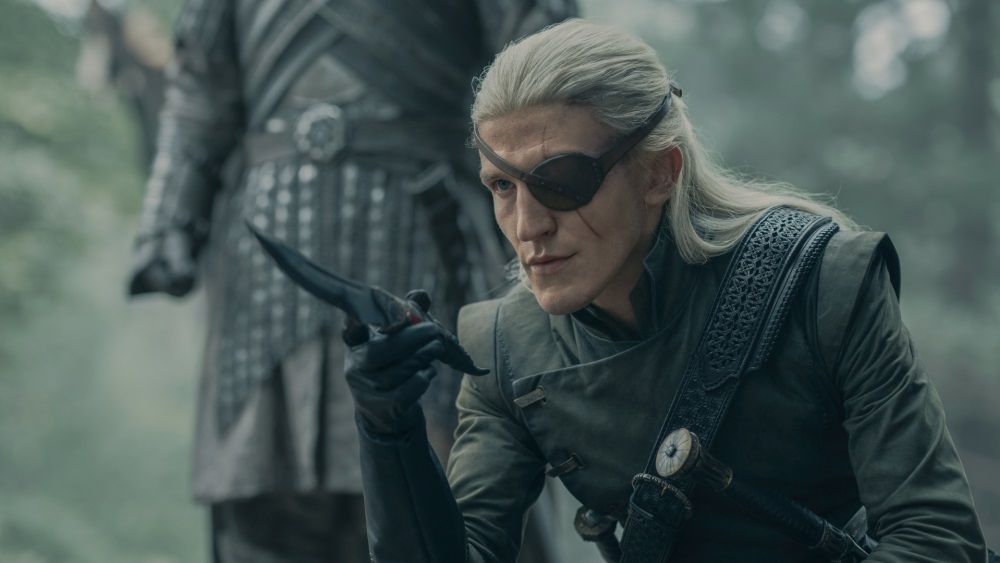
The battle’s aftermath leaves a lasting impact on the series’ narrative and characters. Rhaenys’ sacrifice is both a significant loss for Team Black and a moment of profound personal closure for her character. Taylor ensures that her death is portrayed with the gravity it deserves, focusing on her bravery and the emotional weight of her decision. “It’s a literal letting go, and 100 per cent emotional and spiritual letting go. Absolute detachment and peace and release, which is such a relief” (Esquire), describes Best, highlighting Rhaenys’ acceptance of her fate.
The episode also highlights the broader strategic implications of the battle. The Greens’ victory at Rook’s Rest comes at a high cost, illustrating the unpredictable and destructive nature of dragon warfare. This balance between personal sacrifice and political consequences exemplifies House of the Dragon’s ability to weave intricate character arcs with grand fantasy elements.
Character Arcs and Emotional Resonance
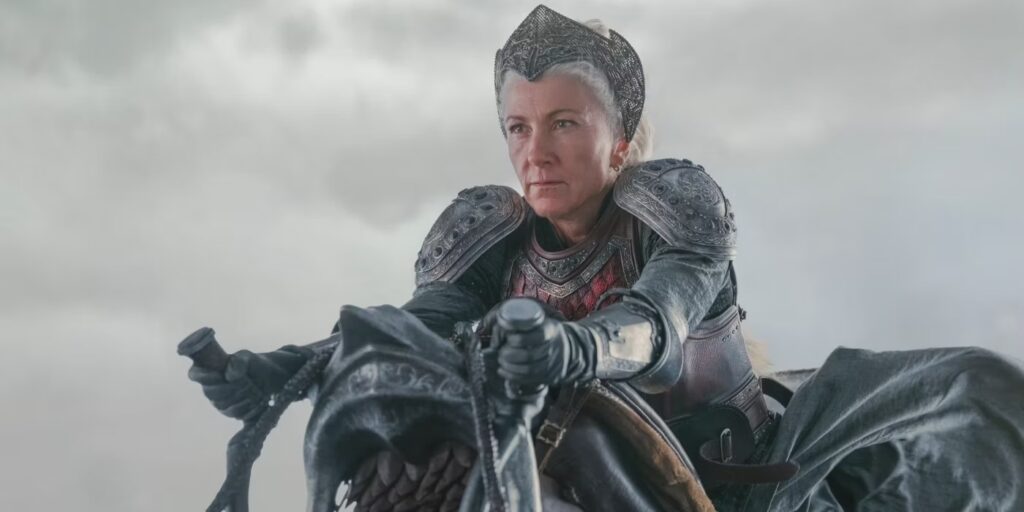
Rhaenys’ journey in this episode is marked by a profound sense of duty and acceptance of her fate. Eve Best describes her character’s mindset during the battle: “It was a literal letting go, and 100 per cent emotional and spiritual letting go. Absolute detachment and peace and release, which is such a relief” (Esquire). This detachment is visually captured in the shot of Rhaenys falling from Meleys, her face embodying a mix of serenity and resolve.
The relationship between Rhaenys and Meleys adds another layer of emotional depth to the battle. Best mentions a moment of connection before the flight to battle: “There’s a beat before they fly off to battle. There’s just a moment of help, when she allows her vulnerability. I felt like Rhaenys was saying help and Meleys just says, ‘you’ve got this.’ That moment of connection felt really important” (Esquire). This bond underscores the tragic nature of Rhaenys’ eventual fall.
Aemond’s motivations during the battle are multifaceted, driven by both tactical considerations and personal grudges. Taylor highlights this complexity, noting, “The delight of having an actor like Ewan is that it can be all of the above. First of all, it’s a strong tactical move to just blast preemptively with fire. But besides the resentments he carries from previous episodes with his brother, there’s again a similar feeling of, ‘You idiot; you’re asking for this’” (AV Club).
The battle’s choreography also reveals Aemond’s willingness to take extreme risks. Ewan Mitchell discusses Aemond’s motivations, highlighting his desire to gain his mother’s approval and his complex feelings toward his brother, Aegon. “I think there are many things that are driving him, but one of them that I loved to play with and explore was this idea that he wants his mum” (Hollywood Reporter). This emotional depth adds layers to Aemond’s character, making his actions both understandable and tragic.
The VFX Mastery
The VFX team behind House of the Dragon faced significant challenges in bringing the dragons to life and making the battle realistic. Designing full-grown dragons was one thing, but animating a dragon fight required intricate attention to detail. Dadi Einarsson, the VFX supervisor, explains, “The subtext of the scene is: It’s a line in the sand. It’s all been hand-to-hand combat, but this is like they’re experiencing nuclear war for the first time” (Polygon).
Tom Horton elaborates on the complexity of the dragon brawl at Rook’s Rest: “It was the most difficult sequence. It was the one that we finished last. The process began with considering character; the audience was familiar with the look and feel of Drogon, Rhaegal, and Viserion from Game of Thrones, and designs carried back in time to the era of House of the Dragon. But season 2 demanded even more consideration of personality and rider dynamic” (Polygon).
Einarsson and Horton set out to breathe life into their pairs of combatants to raise the stakes of the fight. For Rhaenys and Meleys, the team wanted to strike an “immense kind of foreboding sadness as they go off. They kind of go into battle with dignity. […]
We tried to reflect a bit the character of Meleys through Rhaenys and their relationship, how they kind of interact with each other. It’s kind of a stoic and quiet regal character” (Polygon).
Final Thoughts
Alan Taylor’s direction, Eve Best’s poignant performance, and the exceptional visual effects create a memorable and emotionally charged episode in “The Red Dragon and the Gold”. The dragon battle is a pivotal moment that shapes the series’ future, making it one of the most impactful scenes in House of the Dragon season two.
As House of the Dragon continues to unfold, the events of “The Red Dragon and the Gold” will undoubtedly reverberate, influencing the fates of the characters and the trajectory of the Targaryen civil war.
